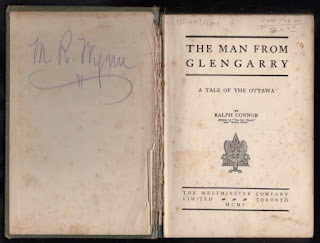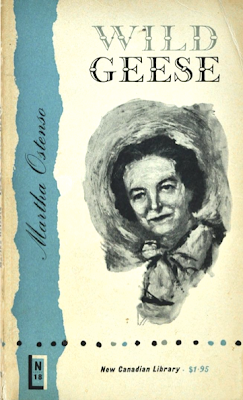 |
| Motion Picture News, 1 September 1923 |
McClaren doesn't feature in The Last Canadian, nor does Frank, nor does Floyd Chisolm, nor does the entire State of Montana. Conversely, Gene Arnprior, the novel's protagonist does not feature in the film. In fact, The Last Canadian and The Patriot don't share a single character or setting. Not one scene from the novel is depicted in the film.
Because I'm a firm believer in research, and am a glutton for punishment, I've watched all ninety minutes of The Patriot and have read all 253 pages of The Last Canadian. Twice. I can attest that there is as much similarity between the two as there is between Armageddon and The Queers of New York.
I'm fairly certain that The Patriot is the least faithful screen adaptation of a Canadian novel, but can't say for sure because I'll never get the chance to see The Critical Age, the 1923 film based on Ralph Connor's Glengarry School Days. Like so many thousand other silents, The Critical Age is a lost film. Everything I know about it – which isn't much – comes courtesy of 94-year-old reviews, like this one, written by Laurence Reid for the May 19, 1923 edition of Motion Picture News:
We don't see the reason for calling it by its present title in view of the fact that the original story was known far and wide as ''Glengarry School Days." Perhaps they felt that it might not interest the customers who had emerged from adolescence. Some title more suitable than "The Critical Age" should have been employed. This is the only shaft of criticism which we can hurl at this neat little production, which is strong in atmosphere – which tells a story of political conflict without any tedium being suggested as is often the case in this type of plot.Reviewer Reid assumes that the reader is familiar with Connor's novel. And why not? Glengarry School Days was an international bestseller. I expect I would have more than one shaft of criticism, but then I prefer adaptations that play some small deference to the source.
The original yarn carried quite a schoolroom background. It has not been neglected here. It serves here in introducing two highly adaptable players in James Harrison and Pauline Garon – as well as establishing the romance. The political sequences follow and bring forth the efforts of a rich Parliament member [sic] and his son to put over a bill which would dislodge the homesteaders. The romance carries on apace through the efforts of this son to win the daughter of another lawmaker from a young homesteader. The latter is successful in scenes which carry on with sufficient color [sic] and movement – scenes which take in the girl's rescue from the river and a mad ride in a motor car by the champion of the farmers who casts his vote in the nick of time.
Maineiac Harlan Knight plays lead character Peter Gorach. James Harrison appears as Tom Findley, while Alice May brings life to his mother. Montrealer Pauline Garon, who would decades later land a bit part in How Green Was My Valley, plays love interest Maggie Baird. And then we have Wallace Ray as Bob Kerr, Raymond Peck as Senator Kerr, Marion Colvin as Mrs Baird, and William Colvin as Senator Baird. Not one of these characters appears in Glengarry School Days. The plot Reid describes in Motion Picture News will be entirely unfamiliar to readers of the novel.
The few surviving stills are equally unrecognizable.
Glengarry School Days does feature a heroic dog – name: Fido – who saves Hughie Murray from a bear attack. The son of a clergyman, young Hughie is the protagonist of Glengarry School Days, though he doesn't appear in the screen adaptation. In this way, he is no different than any of the other characters in the novel. Parliament Hill does not feature and Ottawa isn't so much as referenced. No girl is rescued from a river. There is no mad ride in a motor car, which is not surprising when one considers that Glengarry School Days is set in the 1870s.
Despite my misgivings, I'd gladly give The Critical Age a chance. I expect it is more enjoyable than The Patriot, if only because, at 46-minutes running time, it's barely half the length.
Related posts:























































